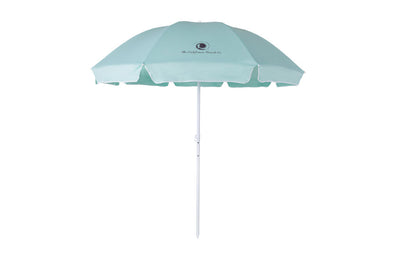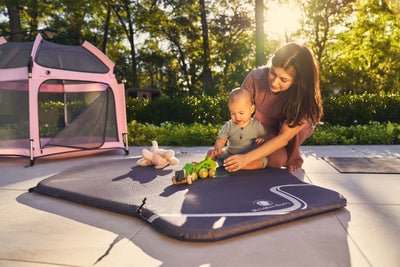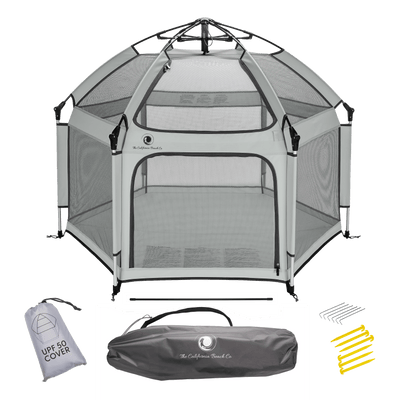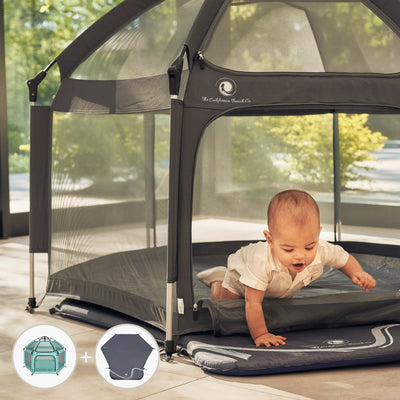Blog written by California Beach Co.
Throughout the last decade, the world has gone digital, and that's not to say there aren't many incredible benefits to take advantage of within the online world. However, many kids today miss out on the surplus of advantages that come with spending time outdoors and in their own backyard. That's where gardening with kids comes into play. Building a garden together isn't only an amazing way to ensure your child or children get plenty of natural Vitamin D, but it's the perfect way to teach them life skills that are both healthy and sustainable.
The best part is that kids' gardens don't always have to be outdoors. You can take a small section of a room in your home and turn it into a lively little area that thrives with plant life. You can even make it a little bit more fun and teach your young one(s) about the superpower of the green thumb. Gardening together has no shortage of benefits and can be a great way to bond and learn together.

How Difficult is Building a Garden for Kids?
When building a garden for kids, you have a variety of options to choose from that'll make the stress of caring for the garden range from easy to a little more time-consuming. You'll need to make some decisions early on to limit the difficulty level or help determine how much effort will be needed to take care of the plant life you grow.
It's important to keep in mind that while you're teaching kids how to be responsible, you're still ultimately responsible - but, please don't let that overwhelm you. This is meant to be a fun experience for everyone and it's okay if you yourself don't have a green thumb. You can still bond and learn about things like sustainability together as you watch your plants begin to grow.
Factors to keep in mind as you start putting together your natural oasis include:
- The age of the kid(s)
- How many plants you'd like to grow
- How much space you have to work with
- What kinds of plants will you be taking care of (with smaller children you want to use bigger seeds when planting for safety)
- How will you get your little one(s) involved and keep them engaged as you witness the plants growing (this is the most exciting part)
Depending on the age range of your kid(s), you may want to start with a small garden and then expand upon it as they get older. This can help children stay attentive and can also help prevent garden burnout on your end as you go behind them and make sure your plants are getting the nurture and care they deserve.
Great starting seeds for both younger children and older children are:
- Peas
- Beans
- Squash
- Sunflowers
These types of seeds are larger and easy to handle, and they germinate and grow quickly, which can prevent impatience and generate excitement.

Kid Safe Tools for Gardening
Like most activities for kids, gardening requires attention to detail, which means that anything other than watering the plants and checking on them should always be done under supervision. Fortunately, gardening with kids isn't typically a dangerous or scary task, and it can be quite easy to make it kid-friendly for all age ranges.
The obvious precautions to take when gardening with children is to handle the pruning of plants yourself or, if they're older, you can teach them how to safely handle tools such as clippers and monitor them while they help handle decaying leaves or tiny bits.
When looking for the tools you may need, you'll find that there are plenty of well-made tool kits where the shovels and sills are made of durable plastic or designed to be safe to use. However, it's essential that you always put away and secure tools after using them.
Featured Products
One great product you can include in your garden shopping list is the Rainbow Voyager Blanket. It's perfect for both outdoor and indoor use and can help keep kids comfortable while they learn to pot plants. The blanket is perfect for giving kids a safe place to rest after they've worked hard helping you take care of the garden. The best part is, the blanket is large enough for multiple kids or multiple people to sit on and it's made from organic bamboo, which gives you a teachable moment to discuss how plants are used for many things worldwide.

Benefits of Gardening with Kids
Building a garden for kids has no lack of benefits. It offers a surplus of educational and adventurous moments that help ensure children are both physically active and hands-on with something that keeps their curious minds going. Gardening with kids teaches responsibility, routine, and helps address important life skills such as taking care of something. Since benefits are in no shortage, let's look over a few of the many that growing a garden together can bring.
Benefits of gardening with kids of all ages include:
- Teaching the importance of routine
- Building strong organizational skills
- Increases motivation and strengthens handy-work mentality
- Helps to better understand sustainability and composting
- Encourages independence
- Offers plenty of educational and developmental growth
- Encourages healthy habits such as a greener diet
- Helps with STEM and analytical abilities
The list of advantages continues on when you break down all of the many educational, physical, developmental, and health benefits that come with growing your own produce. At the end of the day, as much as you can learn when working in your garden together, it's a great way to bond and boost self-esteem as you watch a plant come to life and grow.

What do Kids Learn From Gardening?
One of the best perks you'll find when gardening with kids is how adaptable children are to their small tasks. While the younger the child the shorter the attention span, kids of all ages can pick up incredible life skills from the fun. For example, watching a plant grow can spark plenty of questions for children, leading them to ask things like why plants need the sun or where the water goes when a plant drinks it.
While explaining the answers to them, you can easily work in how humans are the same way and how food and water are essential needs for us to grow. Additionally, you can work in math and measuring skills to show them how quickly your product is growing. Other great learning opportunities when gardening includes teaching them about different types of vegetables, their own body and its limits, health, exercise, vitamins, and much more.

Gardening Activities for Kids
Ready to get started? Try these 3 easy-to-manage activities to get your garden up and growing as you rack in all the giggles and memorable moments spending time together.
- Sprout some seeds
- Garden scavenger hunt
- Toilet paper tube seed starter
When sprouting seeds, all you need is a little bowl or jar, your seeds of choice, and some water. Once you've got your green ingredients, you can pour 2-3 times the amount of seeds into your bowl and let them sit in a dark room for 8-12 hours. This is great to do before bedtime and makes the morning exciting. Next, you'll rinse and drain the seeds until they start sprouting.
If you'd like to create a fun scavenger hunt, you can visit your local botanical garden or hide your gardening tools and go on a 'hunt' together to find them. The items you're looking to find can be a great way to teach younger children colors, the names of plants, and much more.
Want to make a mini garden? Grab some toilet paper tubes and cut them in half, then glue or tape the bottom of one end closed. This will act as your pot and you can add moistened soil and seeds. Be careful not to overwater your mini garden and use twine or string to help keep the plants upright as you nurture them.
Final Thoughts
Gardening with kids doesn't have to be incredibly stressful or overwhelming. It's truly as easy as using some household items and purchasing a little soil and some seeds, plus taking the time to spend with your little one(s) to plant and grow together. It can be filled with plenty of laughter, many picture-perfect moments, and a whole lot of chances to act silly and get excited over witnessing your plants grow. We hope you have an amazing time gardening and learning together.














